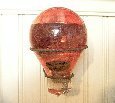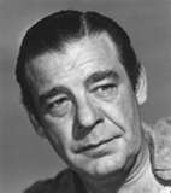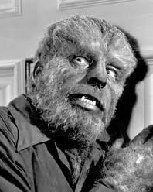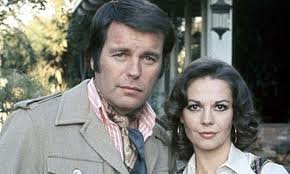King Camp Gillette (January 5, 1855 – July 9, 1932) was an American businessman who invented a bestselling safety razor. Gillette's innovation was the thin, inexpensive, disposable blade of stamped steel. Gillette is often erroneously credited with inventing the so-called razor and blades business model in which razors are sold cheaply to increase the market for blades. However, Gillette Safety Razor Company adopted the business model from its competitors.
Biography
The Gillette paternal ancestors were French Huguenots who sought refuge in England in the late 16th century. One or two generations later, in 1630, Nathan Gillette sailed from England to the newly founded Massachusetts Bay Colony in North America.
King Camp Gillette was born on January 5, 1855, in Fond du Lac, Wisconsin, and raised in Chicago, Illinois. His family survived the Great Chicago Fire of 1871.
While working as a salesman for the Crown Cork and Seal Company in the 1890s, Gillette saw bottle caps, with the cork seal he sold, thrown away after the bottle was opened. This made him recognize the value in basing a business on a product that was used a few times, then discarded. Men shaved with straight razors that needed sharpening every day using a leather strop. As existing, relatively expensive razor blades dulled quickly and needed continuous sharpening, a razor whose blade could be thrown away when it dulled would meet a real need and likely be profitable.
Safety razors had been developed in the mid-19th century, but still used a forged blade. In the 1870s, the Kampfe Brothers introduced a type of razor along these lines. Gillette improved these earlier safety-razor designs and introduced the high-profit-margin stamped razor blade made from carbon steel sheet. Gillette's razor retailed for a substantial $5 (equivalent to $163.00 in 2022) – half the average working man's weekly pay – yet sold by the millions.
The most difficult part of development was engineering the blades, as thin, cheap steel was difficult to work and sharpen. This accounts for the delay between the initial idea and the product's introduction. Steven Porter, a machinist working with Gillette, used Gillette's drawings to create the first disposable razor blade that worked. William Emery Nickerson, an expert machinist and partner of Gillette, changed the original model, improving the handle and frame so that it could better support the thin steel blade. Nickerson designed the machinery to mass-produce the blades, and he received patents for hardening and sharpening the blades. (Nickerson was later elected to Gillette's board of directors.)
To sell the product, Gillette founded the American Safety Razor Company on September 28, 1901 (changing the company's name to Gillette Safety Razor Company in July 1902). Gillette obtained a trademark registration (0056921) for his portrait and signature on the packaging. Production began in 1903, when he sold a total of 51 razors and 168 blades.
Personal life
Gillette was also a Utopian Socialist. He published a book titled The Human Drift (1894) which advocated that all industry should be taken over by a single corporation owned by the public, and that everyone in the US should live in a giant city called Metropolis powered by Niagara Falls. A later book, World Corporation (1910) was a prospectus for a company set up to create this vision. He offered Theodore Roosevelt the presidency of the company, with a fee of one million dollars. (Roosevelt declined the offer.) Gillette's last book, The People's Corporation (1924), was written with Upton Sinclair and later inspired Glen H. Taylor. Gillette was initiated to the York Rite of Freemasonry, till his elevation to the highest degree of Grand Master.
Gillette married Alanta "Lantie" Ella Gaines (1868–1951) in 1890. They had one child, King Gaines Gillette (1891–1955).
In his later life he traveled extensively and was universally recognized from his picture on the packets of razor blades. People were surprised that he was a real person rather than just a marketing image. A Gillette company history stated that in non-English speaking countries people would often ask for "the kind with the Man's Face" blades.
Around 1922 or 1923, he built a residence at 324 West Overlook Road, in "The Mesa" district of Palm Springs. A 4,800-square-foot main home and 720-square-foot guest house. The homes, sitting on 1-acre of land, are what remain of the original estate.
Legacy
The company continues in the present day as the Gillette brand of Procter & Gamble.
Gillette is widely credited with creating the "razor-razor blade business model". Some peers in the marketing industry quote him as one of the innovators who revolutionized the freebie marketing ideas. The Gillette Company continued to thrive and sell products under a variety of brand names including Gillette, Braun, Oral-B, and Duracell. In 2005, the Gillette company was sold to Procter & Gamble for US$57 billion. It is now known as Global Blades & Razors, with the Gillette brand, a business unit of Procter & Gamble.
King Gillette Ranch
King Gillette purchased property for a large ranch in the Santa Monica Mountains near Calabasas in Southern California in 1926. The master plan and new buildings on the ranch were designed and built for Gillette in the late 1920s by renowned architect Wallace Neff. The architectural style was Spanish Colonial Revival. After his death, his wife sold the home to Clarence Brown, an MGM film director who held A-List Hollywood parties at the ranch. In 1952, Bob Hope bought the property, immediately giving it to the Claretian Order of the Catholic Church, which operated a seminary on the grounds for 25 years. In 1970 Thomas Aquinas College rented the property from the Claretian Order before later moving their campus to Santa Paula in 1977. Elizabeth Clare Prophet, founder of the Church Universal and Triumphant, purchased the property in 1978, and ran her New Age church at the site until 1986 when Soka University of America (SUA) bought the land.
- SERVES
- 4
- COOK TIME
- 15 Min
Fancy-shmancy just got easy-"pea"sy with our recipe for Chicken a la King in a Hurry! This comforting dinner recipe is said to have been created for a King, who loved it so much he put it on his hotel menu the very next day. Now your whole gang can enjoy having it on their menu!
- 3 tablespoons butter
- 8 ounces fresh mushrooms, sliced
- 1 (10-3/4-ounce) can cream of chicken soup
- 1/2 cup milk
- 1/2 teaspoon salt
- 1/4 teaspoon black pepper
- 2 cups chunked cooked chicken (about 2 boneless, skinless chicken breasts)
- 1 cup frozen green peas, thawed
- 1 (2-ounce) jar diced pimientos, drained
- In a large skillet over medium heat, melt butter; saute mushrooms 4 to 5 minutes, or until tender. Add soup, milk, salt, pepper, and chicken; mix well and cook 3 to 4 minutes, or until hot.
- Stir in peas and pimientos and continue cooking 5 to 7 minutes, or until warmed through.
****Serve over warm cooked egg noodles or buttermilk biscuits.




.jpg)










2 comments:
Thank you for the birthday wishes! It is also Lunar New Year (Tet) today, so Happy Year of the Dragon!!
Good morning. Thank you for enlightening me on the founder of Gillette. The minds of mass creators fascinates. It is not a stereotype. Nor does genius flow well into all business models.
Chicken a la King is indeed fine comfort food. Fresh Pimentos are difficult to source fresh. Perhaps I should source seeds.
Ironic that the first day this week we will reliably go without rain, that it is umbrella day. ��
Happy Chinese New year.
Post a Comment